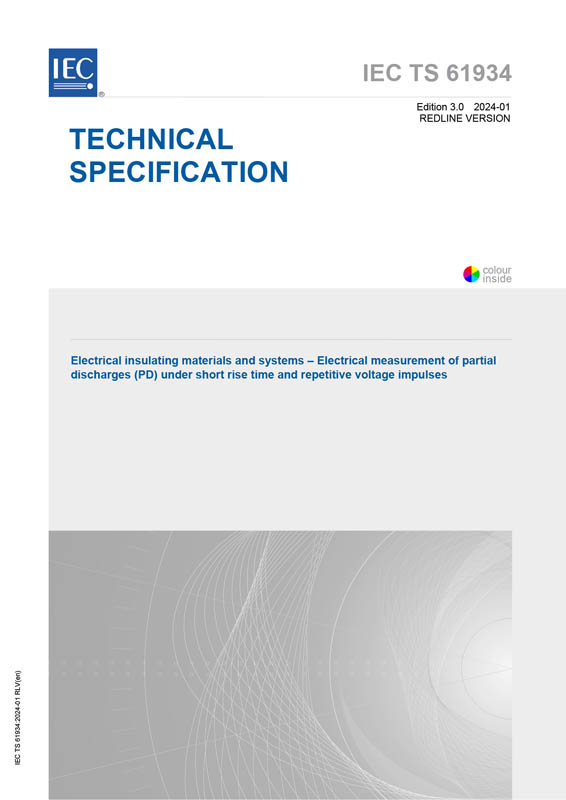IEC TS 61934:2024 RLV
Electrical insulating materials and systems - Electrical measurement of partial discharges (PD) under short rise time and repetitive voltage impulses
Ausgabedatum:
2024-01
Edition:
3.0
Sprache: EN - englisch
Seitenzahl: 58 VDE-Artnr.: 252491
IEC TS 61934:2024 RLV contains both the official IEC International Standard and its Redline version. The Redline version is available in English only and provides you with a quick and easy way to compare all the changes between the official IEC Standard and its previous edition.
IEC TS 61934:2024 is applicable to the off-line electrical measurement of partial discharges (PDs) that occur in electrical insulation systems (EISs) when stressed by repetitive voltage impulses generated from power electronics devices.
Typical applications are EISs belonging to apparatus driven by power electronics, such as motors, inductive reactors, wind turbine generators and the power electronics modules themselves.
NOTE Use of this document with specific products can require the application of additional procedures.
Excluded from the scope of this document are:
- methods based on optical or ultrasonic PD detection,
- fields of application for PD measurements when stressed by non-repetitive impulse voltages such as lightning impulse or switching impulses from switchgear.
This edition includes the following significant technical changes with respect to the previous edition:
a) background information on the progress being made in the field of power electronics including the introduction of wide band gap semiconductor devices has been added to the Introduction;
b) voltage impulse generators; the parameter values of the voltage impulse waveform have been modified to reflect application of wide band gap semiconductor devices.
c) PD detection methods; charge-based measurements are not described in this third edition nor are source-controlled gating techniques to suppress external noise.
d) Since the previous edition in 2011, there have been significant technical advances in this field as evidenced by several hundreds of publications. Consequently, the Bibliography in the 2011 edition has been deleted in this third edition.


